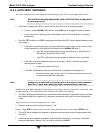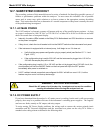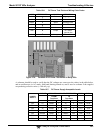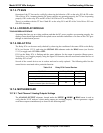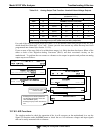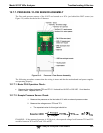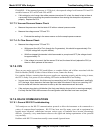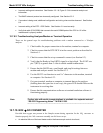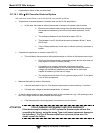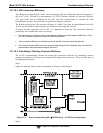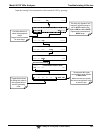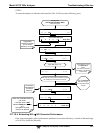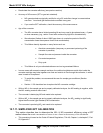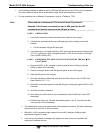
Model 9110T NOx Analyzer Troubleshooting & Service
Teledyne Analytical Instruments 290
EXAMPLE: If the measured pressure is 25 Hg-in-A, the expected voltage level between TP4 and TP1
would be between 3533 mVDC and 4318 mVDC.
If this voltage is out of range, then either pressure transducer S1 is bad, the board is bad or there is
a pneumatic failure preventing the pressure transducer from sensing the absorption cell pressure
properly. Replace the PCA.
12.7.7.3. Vacuum Pressure Sensor Check
Measure the pressure on the inlet side of S2 with an external pressure meter.
Measure the voltage across TP5 and TP1.
Evaluate the reading in the same manner as for the sample pressure sensor.
12.7.7.4. O
3
Flow Sensor Check
Measure the voltage across TP3 and TP1.
With proper flow (80 cc
3
/min through the O
3
generator), this should be approximately 2V ±
0.25 (this voltage will vary with altitude).
With flow stopped (photometer inlet disconnected or pump turned OFF) the voltage should
be approximately 1V.
If the voltage is incorrect, the flow sensor S3 is bad, the board is bad (replace the PCA) or
there is a leak upstream of the sensor.
12.7.8. CPU
There are two major types of CPU board failures, a complete failure and a failure associated with the
Disk On Module (DOM). If either of these failures occurs, contact the factory.
For complete failures, assuming that the power supplies are operating properly and the wiring is intact,
the CPU is faulty if on power-on, the watchdog LED on the motherboard is not flashing.
In some rare circumstances, this failure may be caused by a bad IC on the motherboard, specifically
U57, the large, 44 pin device on the lower right hand side of the board. If this is true, removing U57
from its socket will allow the instrument to start up but the measurements will be invalid.
If the analyzer stops during initialization (the front panel display shows a fault or warning message),
it is likely that the DOM, the firmware or the configuration and data files have been corrupted.
12.7.9. RS-232 COMMUNICATIONS
12.7.9.1. General RS-232 Troubleshooting
TAI's analyzers use the RS-232 communications protocol to allow the instrument to be connected to a
variety of computer-based equipment. RS-232 has been used for many years and as equipment has
become more advanced, connections between various types of hardware have become increasingly
difficult. Generally, every manufacturer observes the signal and timing requirements of the protocol
very carefully.
Problems with RS-232 connections usually center around 4 general areas:



